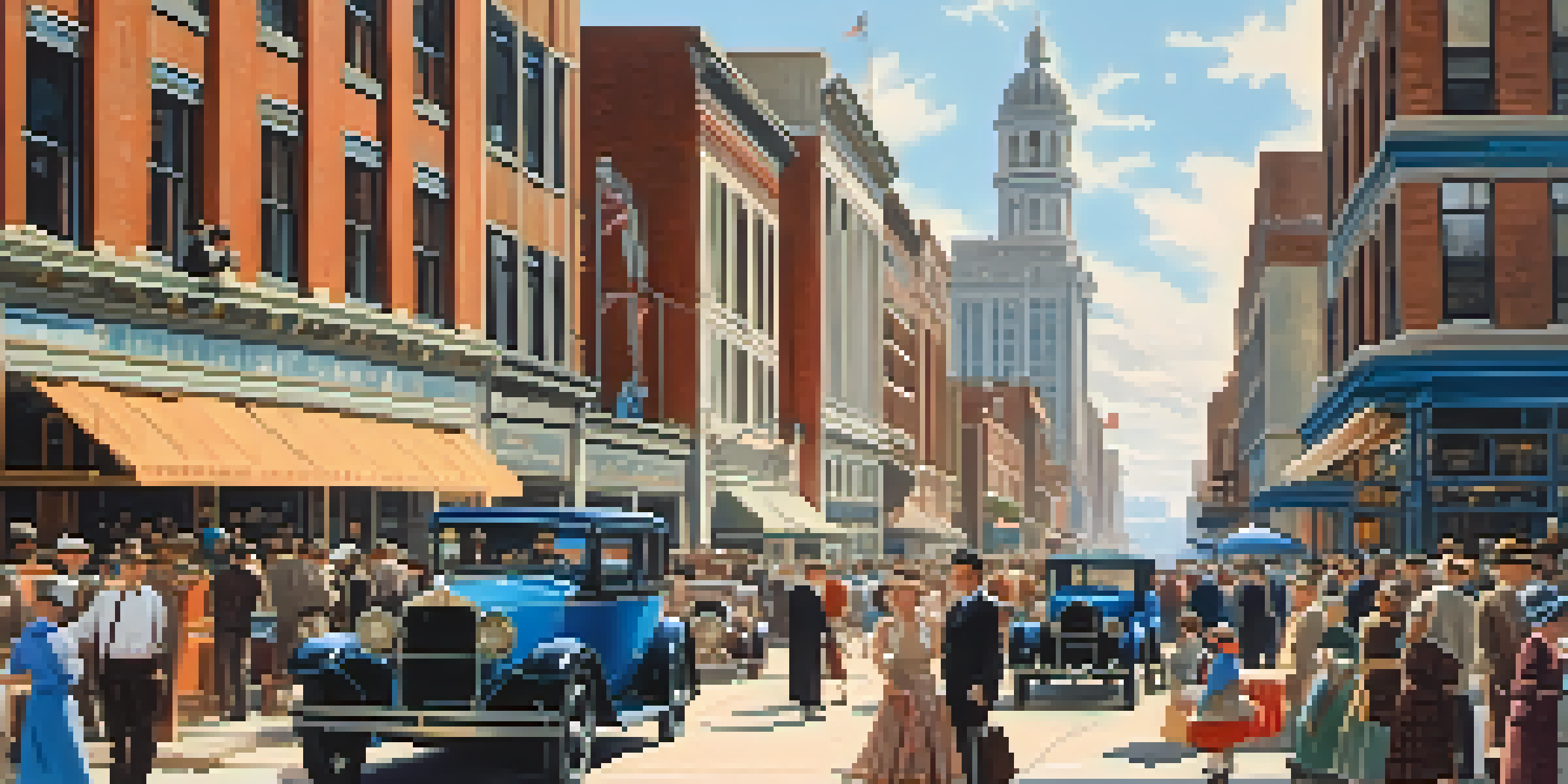The Rise and Fall of Detroit: Economic Challenges Explained

Introduction: A Brief Overview of Detroit's Journey
Detroit, once the heart of American manufacturing, has experienced a rollercoaster of economic highs and lows. In the early 20th century, the city thrived, driven by the automobile industry, which attracted talent and investment. However, this vibrant economy faced numerous challenges, leading to significant decline over the decades. Understanding this journey helps us appreciate the resilience of the city and its people.
The Industrial Boom: Detroit's Golden Era
The early 1900s marked a golden era for Detroit, as it emerged as the epicenter of the automotive industry. Companies like Ford, General Motors, and Chrysler flourished, creating jobs and attracting workers from across the country. This industrial boom not only fueled economic growth but also transformed the city into a cultural melting pot. The prosperity of this time set the stage for Detroit's identity as 'Motor City.'
Detroit's Economic Ups and Downs
Detroit has navigated significant economic fluctuations, from its industrial boom in the early 20th century to the challenges faced during the 2008 financial crisis.
Challenges Emerge: Economic Decline Begins
Despite its earlier success, Detroit began to face economic challenges in the 1960s. Factors like globalization, competition from foreign automakers, and suburbanization led to factory closures and job losses. This decline was compounded by social issues, such as racial tensions and urban flight, which further strained the city's resources. As the economy faltered, so did the city's once-thriving neighborhoods.
The Impact of the 2008 Financial Crisis
The financial crisis of 2008 hit Detroit particularly hard, leading to significant job losses and home foreclosures. As the auto industry struggled, the city faced mounting debt and declining revenues. This situation culminated in Detroit's historic bankruptcy filing in 2013, marking the largest municipal bankruptcy in U.S. history. The crisis highlighted the urgent need for economic restructuring and revitalization strategies.
Revitalization Efforts in Motion
Post-bankruptcy, Detroit is embracing revitalization through new business initiatives and urban renewal, aiming to reclaim its legacy.
Revitalization Efforts: A New Chapter Begins
In the aftermath of bankruptcy, Detroit embarked on a path of revitalization, with efforts aimed at economic recovery and urban renewal. Initiatives included attracting new businesses, investing in infrastructure, and fostering entrepreneurship. The city's resurgence has seen a growing tech sector and a renewed interest in downtown living. This new chapter is a testament to the determination of Detroit's residents and leaders to reclaim their city's legacy.
Current Economic Landscape: Progress and Challenges
Today, Detroit's economic landscape reflects a mix of progress and ongoing challenges. While the job market has improved and property values are rising, disparities remain in education and access to resources. The city is working to bridge these gaps, focusing on inclusive growth that benefits all residents. Understanding these dynamics is crucial for anyone looking to grasp Detroit's complex economic reality.
Cultural Resilience Shines Through
Despite economic struggles, Detroit's rich cultural scene continues to thrive, showcasing the community's creativity and spirit.
Cultural Resilience: The Spirit of Detroit
Throughout its ups and downs, Detroit's cultural resilience has shone brightly. The city is home to a rich tapestry of music, art, and community activism that reflects its diverse heritage. Events like the Detroit Jazz Festival and the growth of local art scenes showcase the city's vibrant culture, drawing both locals and tourists alike. This spirit is a powerful reminder that even in tough times, creativity and community can thrive.
Looking Ahead: Detroit's Future Prospects
As Detroit looks to the future, there are both challenges and opportunities on the horizon. Ongoing investments in technology, education, and infrastructure are essential for sustainable growth. Community engagement and collaboration will be key in shaping a city that is equitable and prosperous for all. By learning from its past, Detroit can forge a brighter future, proving that resilience can lead to renewal.